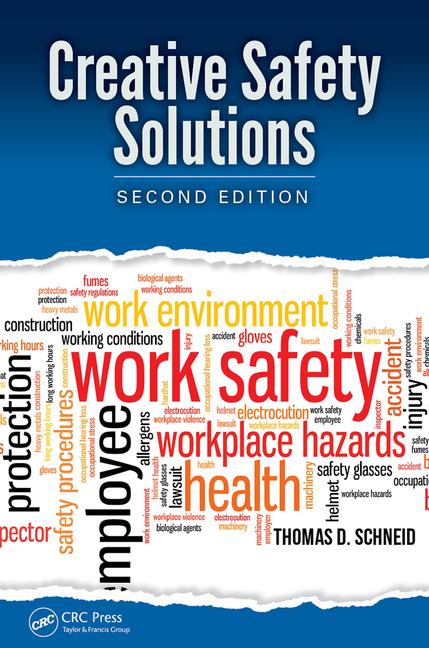
Ever see a worker covered with dirt at the end of a long day and notice clean circles around their eyes indicating where safety glasses or goggles have been? This image provides a powerful reminder of how vital eye protection is; a slip-up that leaves only a stain on a uniform or a nick on a work glove can cause a life-altering injury to an unprotected eye.
Finding the right eyewear to protect your employees is essential, not only because of the valuable and fragile nature of the eyes, but because eye protection usage is easy to monitor and provides a visible statement of a company’s safety culture. Because every job is different, even individuals with the same job description may face different hazards based on their location within the workplace.
High impact: standards and styles
Because of the many variables at a given worksite, a physical walkthrough or hazard assessment is vital to any safety program audit. As you begin, look and listen for sparks, chips or particles that could present an impact hazard, and be aware of stationary objects employees could run into. If impact hazards are prevalent, eye protection is a must.
Although all eyeglasses are impact-resistant, industrial protective eyewear must meet a more stringent standard, ANSI Z87.1, and must be marked with “Z87” on every major component. Where impacts are an identified hazard, impact-rated eye protection is required, and these products will carry Z87+ markings to indicate their higher impact strength. In more extreme conditions, ballistic performance according to the military eyewear standard, MIL V0, may be appropriate.
Most protectors, like spectacles, fall into a category known as “plano” eyewear; this means the lenses do not have an optical correction. Technology allows manufacturers to offer modern designs with wraparoundstyle plano lenses that offer comprehensive angular protection in styles employees will want to wear. For those requiring prescription eyewear, many plastic and metal spectacles are available with detachable side shields that provide the needed lateral protection.
Heavy duty: goggles and face shields
Once high velocity particles have been accounted for, turn your attention to other particulate hazards. Look at the air around your employees: does it contain a noticeable amount of dust or chemicals? While these tiny, suspended particles are unlikely to penetrate the eye, they can become lodged in and around the eye, potentially causing damage that could result in recordable events, lost time and negative economic impact.
Workers in such environments may need to move up to the next level of eye protection - goggles. Goggles should form a tight seal to the face, shutting out airborne substances while providing 180-degree impact protection. In these environments, comfort and fit are extremely important. Many available models offer a comfortable, secure fit without compromising peripheral vision.
Your hazard assessment may identify areas where full eye and face protection is required. Face shields offer a complete and robust solution for all types of hazards, including impact, particulates, chemicals and radiation. But remember, face shields are commonly considered to be secondary protectors and are recommended to be worn in conjunction with protective spectacles or goggles.
Radiation hazards: UV, glare and heat
While ultraviolet radiation won’t stain your shirt, it can damage your eyes. Ultraviolet, or UV, is a type of radiation produced by the sun as well as by some industrial processes like welding. Because longterm UV exposure can lead to blindness or cataracts, employees who spend any time outside should be outfitted with eyewear that blocks >99% of all ultraviolet radiation.
Glare hazards are among the most commonly overlooked in safety audits. To combat outdoor glare from both direct and reflected sunlight, eyewear should be mirrored or darkly tinted, preferably in wraparoundstyle frames in order to cover all angles. Indoor glare is also quite common and can cause headaches over time. Intense specialized lighting can be counteracted with specialized tints: yellow or sodium vapor light can be cut by a light blue lens filter, while pinkcolored lenses can solve glare problems involving fluorescent or halogen lighting.
Infrared or heat hazards are present in numerous operations including welding and in locations where furnaces are employed. Lens filters are designed to either absorb or reflect heat to minimize the heat load to the eyes and face.
A clear view
When employees can’t see clearly, they will be less likely to notice hazards and therefore less careful in their work. The optical quality of plano lenses is tightly controlled in order to avoid distortion or haziness that could affect visual acuity on the job.
Fogging is an additional factor to consider. To single out this condition, you must concentrate on your employees’ workplaces and the transitions employees make between environments. Very hot or humid environments or sudden changes in temperature and humidity - ” between refrigerated storage and a temperate work floor, for example, or between a heated warehouse and a frigid loading dock - can cause tiny droplets of water to condense on the lenses of eye protection, thus obscuring vision.
A worker with fogged goggles has two options: continue working with limited visibility and risk causing an accident, or remove the eye protection in a dangerous environment and risk injury. To avoid either situation, special lens coatings have been developed that combine hydrophilic and hydrophobic properties to maintain lens clarity. Since these special coatings are not visible, it is important to check with your safety distributor or manufacturer’s representative to make sure you are buying anti-fog coated lenses.
Protection where it counts
With a proper audit of existing conditions and real commitment from management, a strong culture of eye safety can become a reality at your company. With quality protective eyewear, no matter how dirty the job, both employee and employer will be clean where it counts.

